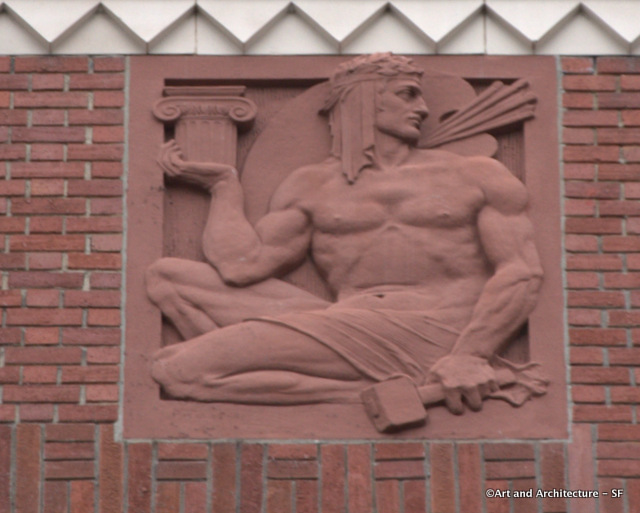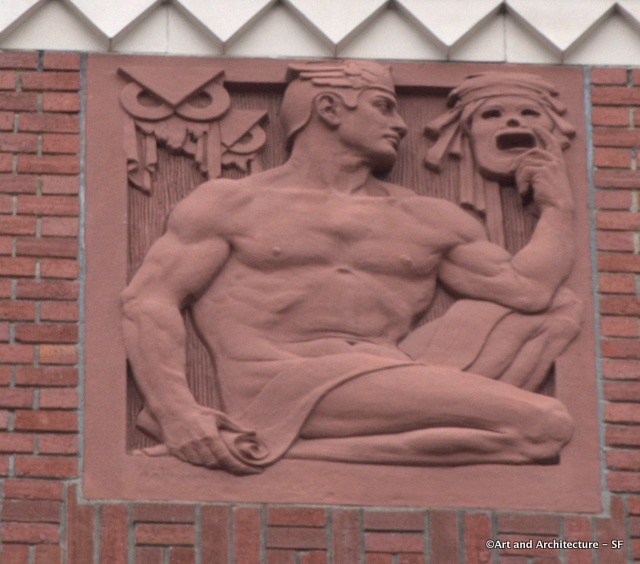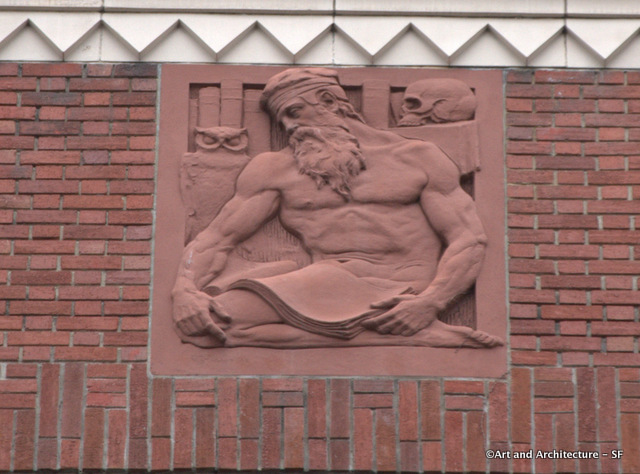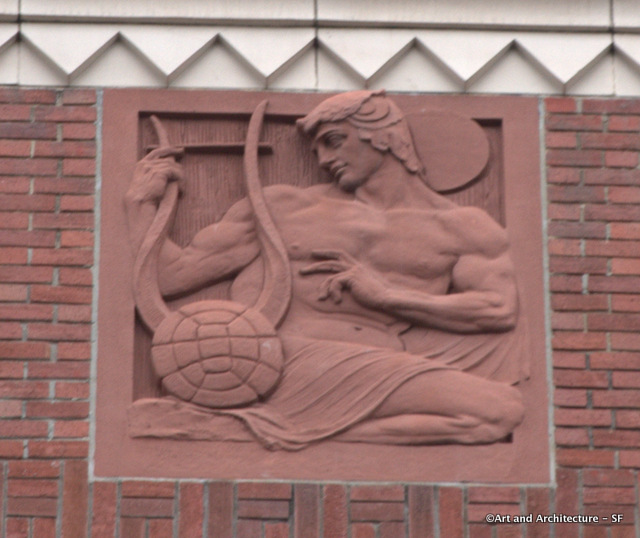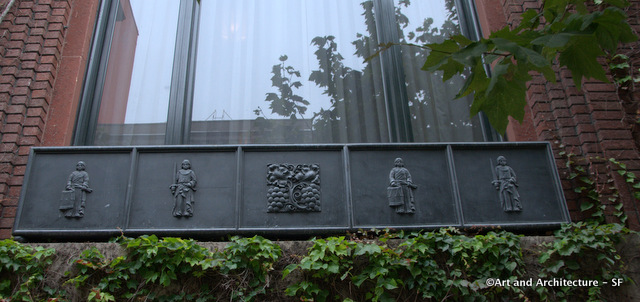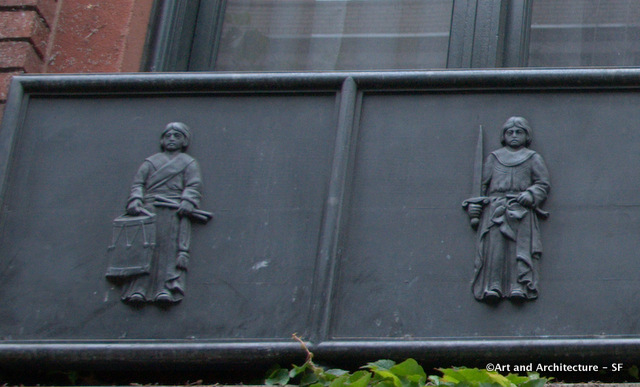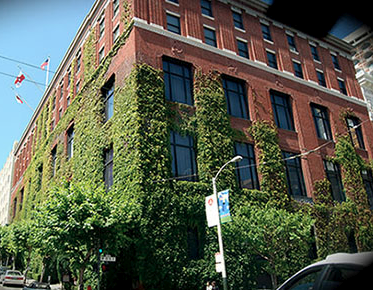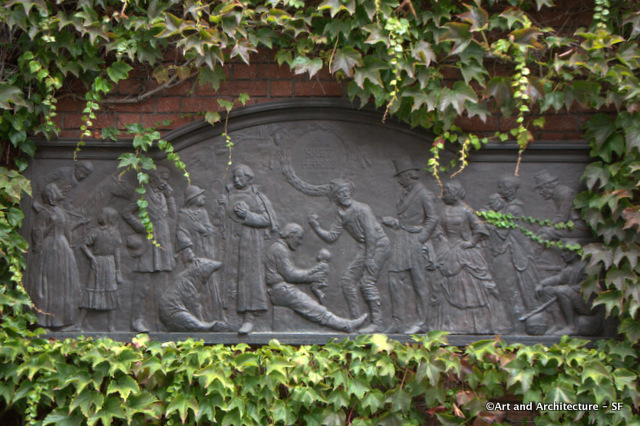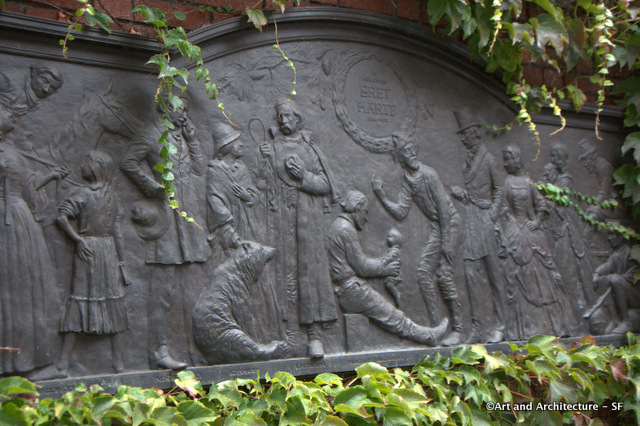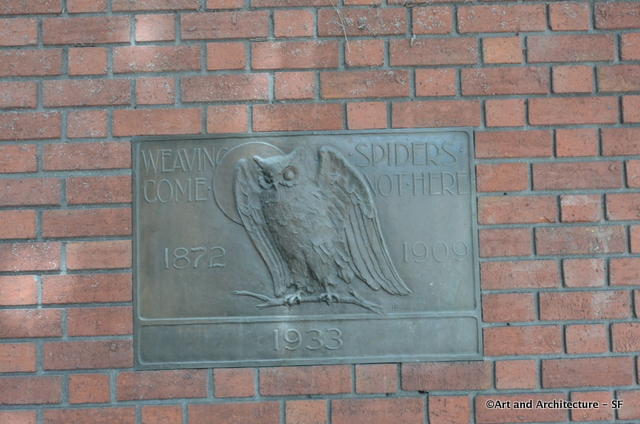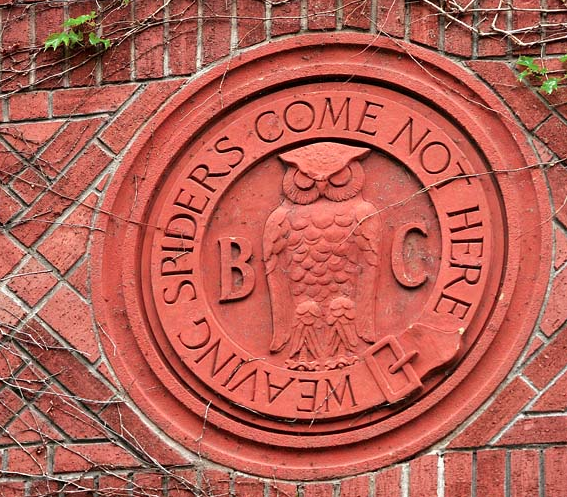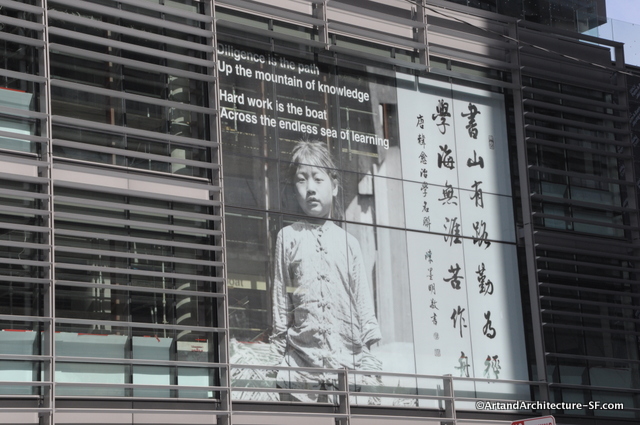624 Taylor Street
Nob Hill
These four bas-relief, terra cotta panels are between the second and third floors of the Bohemian Club on the Post Street side. The first panel depicts Art and Architecture represented by a semi-nude turbanned male figure kneeling. In his proper left hand is a mallet which rests on the ground by his proper left leg. In his raised proper right hand he holds a fluted Greek column with an Ionic capital. Behind the figure is a painter’s palette and brushes.
The second panel depicts Playwriting and Acting represented by a nude male figure kneeling on his proper right knee. The figure wears a helmet with wings, and he holds a partially unrolled scroll at ground level in his proper right hand and a draped mask of tragedy in his raised proper left hand. Draped owl masks (the symbol of the Bohemian Club) hang over the figure’s proper right shoulder.
The third panel depicts Literature represented by a bearded nude male figure. He wears a scribe’s hat and kneels with a large open book resting in his lap, the edge of the book held with his proper left hand. Behind the figure is a skull, a bookshelf with books, and an owl.
The fourth panel depicts Music represented by a partially nude male figure, whose thighs are covered with cloth. His head is covered with a helmet of an owl design. His proper right arm encircles a lyre or harp with a base designed to look like a turtle shell. The figure reaches across to pluck the instrument’s strings. Behind the figure’s proper left shoulder is a disc symbolizing the moon.
These figures were done by Carlo Taliabue. Born in Cremona, Italy on March 26, 1894, Taliabue studied on a scholarship at the Royal Academy of Art in Milan. He immigrated to California in 1924 and lived in the Lincoln-Sacramento area until the late 1930s. At that time he settled in San Francisco where he produced statuary on Treasure Island for the Golden Gate International Exhibition. During the 1940s his work won awards in the annuals of the Society for Sanity in Art at the California Palace of the Legion of Honor. His last years were spent in Walnut Creek, CA until his death there on July 21, 1972.
